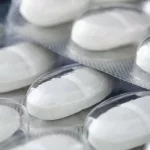Testosterone peaks during the teenage years and into early adulthood. In males, levels often begin to fall after about age 30, while in females a decline commonly starts between 45 and 55 years of age.
Testosterone is a hormone present in both men and women that influences many bodily processes, including:
- sexual desire
- sperm creation
- bone strength
- mental sharpness
- muscle development
- overall energy
As people age, their circulating testosterone slowly diminishes, which can lead to a range of changes.
Read on to understand typical testosterone values by age, recognize signs of abnormal levels, and learn approaches for managing imbalances.
Normal testosterone ranges
Testosterone is reported in nanograms per deciliter (ng/dL).
Per the American Urological Association (AUA), healthy testosterone for males is generally between 450 and 600 ng/dL, while levels under 300 ng/dL are considered low.
That said, there isn’t a universally accepted cutoff for “normal.” Clinicians acknowledge substantial differences among laboratory reference ranges. The Centers for Disease Control and Prevention (CDC) also promotes quality measures to improve lab test accuracy.
The table below summarizes testosterone values reported by some of the largest clinical laboratories in the U.S.:
Age (years)Male (ng/dL)Female (ng/dL)
1 to 102.5 to 102.5 to 10
10 to 18100 to 97
15 to 3818 and older264 to 91• premenopausal: 10 to 55
• postmenopausal: 7 to 40
Testosterone usually reaches its maximum around age 18 and then gradually declines through adulthood.

Prenatal development
Testosterone plays an essential role in fetal development, particularly in shaping the male reproductive organs during pregnancy.
A 2018 study of 60 children suggested that prenatal testosterone levels might influence the functional differences between the right and left hemispheres of the brain.
Some research has also linked elevated prenatal testosterone with autism spectrum traits, though further investigation is required to clarify any causal relationship.
Teen years into early adulthood
Adolescence and early adulthood are when testosterone is most abundant.
In males, the initial outward effects of rising testosterone during puberty include:
- a deeper voice
- increased body and facial hair
- greater muscle growth
During adulthood
In men, testosterone can decrease by up to a small percentage each year after age 30.
In premenopausal women, ovaries are the primary source of testosterone. Research indicates that women produce more testosterone relative to estrogen before menopause.
After menopause, typically between ages 45 and 55, testosterone production commonly declines.
Signs of low testosterone
The AUA defines low testosterone in adult men without obesity as levels below 300 ng/dL, though some labs may still label values as low-normal down to 264 ng/dL.
For adult women, normal testosterone ranges are typically 10 to 55 ng/dL for premenopausal and 7 to 40 ng/dL for postmenopausal individuals.
Symptoms that may suggest low testosterone include:
- lowered sex drive
- fewer spontaneous erections
- impotence
- erectile dysfunction
- difficulty conceiving
- sleep disturbances
- trouble focusing
- reduced drive
- decreased muscle size and strength
- lower bone mineral density
- gynecomastia (enlarged male breasts)
- depressive moods
- persistent tiredness
Testosterone in women
Although testosterone is often called the male hormone, women also require it for normal physiology. Women typically have considerably lower testosterone than men.
When menopause occurs and estrogen declines, relative levels of androgens may appear higher.
Conditions such as polycystic ovary syndrome (PCOS) can raise testosterone levels in women.
Elevated testosterone in females may cause:
- thinning scalp hair
- acne
- irregular or missing periods
- excess facial hair
- fertility problems
Low testosterone in women can result in:
- cognitive changes
- reduced libido
- bone loss
- loss of muscle mass
- fatigue
- mood shifts
Testing and diagnosis
The most reliable way to evaluate for low testosterone is a clinical visit with a physical exam and blood work.
The common approach is a total testosterone assay, which captures both free testosterone and testosterone bound to carrier proteins; separate tests can measure these components individually.
Blood samples for testosterone are best drawn between about 7:00 a.m. and 10:00 a.m., when levels are typically at their peak.
There are also some home testing kits that allow you to check testosterone levels outside a clinic.
Consequences of abnormal testosterone
While aging is a primary driver of falling testosterone, other factors can contribute to lower levels, including:
- chronic illnesses like kidney or liver disease
- thyroid dysfunction
- ovarian disorders
- obesity
- HIV infection
- trauma to the testicles
- early or delayed puberty
- heavy alcohol consumption
- congenital genetic conditions such as Klinefelter syndrome
Causes of abnormally high testosterone include:
- PCOS
- use of anabolic steroids
- congenital adrenal hyperplasia (CAH)
- tumors of the testes or adrenal glands
Read more on the causes of low testosterone.
Managing abnormal testosterone
Treatment options depend on the underlying cause and individual circumstances.
If testosterone is low, clinicians might recommend testosterone replacement therapy (TRT), available in forms such as:
- injections
- transdermal patches
- topical gels
- nasal gels
- subdermal pellets
Clinical guidelines generally advise against prescribing TRT solely for age-related declines without other indications.
Medications often used to lower elevated testosterone in women include:
- glucocorticoids
- combined oral contraceptives
- spironolactone (Aldactone)
Common questions
Is a testosterone level of 500 good?
Whether 500 ng/dL is “good” depends on age and the assay used, but 500 ng/dL sits within the AUA’s reported normal male range of 450 to 600 ng/dL.
What is considered low testosterone in men?
The AUA defines low testosterone as under 300 ng/dL in adult men.
Should a 70-year-old man take testosterone?
Consult a healthcare professional to determine if testosterone therapy is appropriate. They will evaluate symptoms, measure levels, and recommend treatment if indicated.
Bottom line
It’s normal to be concerned about declining testosterone, but a slow reduction is an expected aspect of aging.
If you have troubling symptoms or questions, speak with a clinician who can test your testosterone and help craft a treatment plan when needed.


















Leave a Reply
You must be logged in to post a comment.